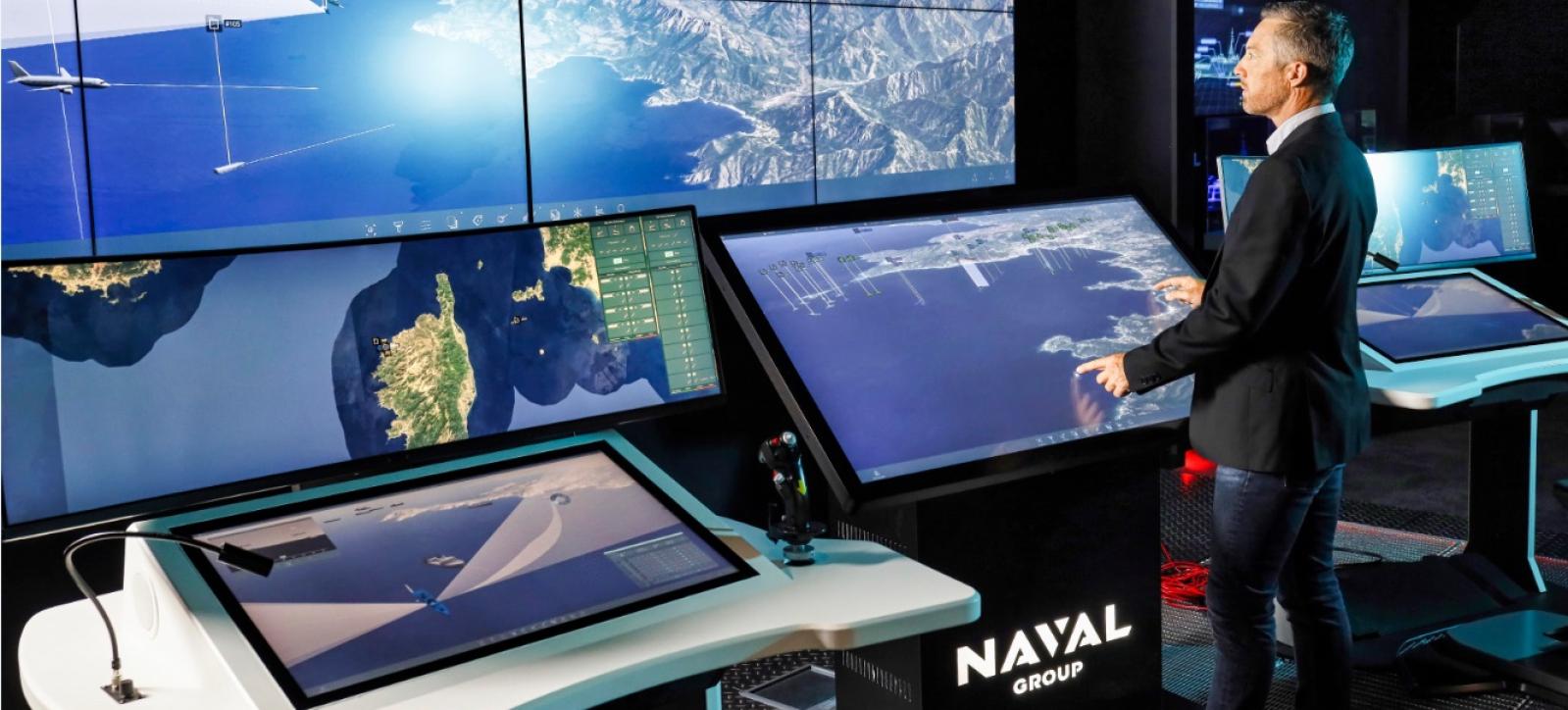MMI ergonomist, UX/UI designer: can you explain your jobs?
Earine: My job is to define user profiles and to create MMIs based on their needs. The means I use to work are data from on board (work environment, length of shifts, luminosity, noise, operator profiles, etc.), existing MMIs or those that need to be created. I take part in upstream phases to capture needs.
Anne: I create innovative solutions for visual displays that take into account the constraints faced by seamen. The strength of our duo is in our ability to model an interface quickly; one that will then be used for demonstrations and presentations to promote an idea or a concept within the group.
What are you working on at the moment?
Anne: We are working on a proof of concept (POC) MMI for autonomous drones. We have joined the technical team who dreamed up the project in order to translate their engineering work into models. We are going to create a task model, which means listing all the tasks an operator has to perform in this interface, as well as the scenarios for its use. The idea is to offer realistic models in an operational context. A former sailor is helping us to see things from his field perspective, exposing his needs and frustrations as a former user of MMI. We used to work with Setis Innovation but as from this summer I will be using Sycobs 3.0.
Earine: I’m also working on a project related to Corporate Social Responsibility (CSR) that will offer concepts for improving the quality of life on board for seamen using a Design Thinking approach. A number of difficulties have been identified. Our job is to find solutions by creating design sheets associated with concept boards (drawings). The concepts found appealing will then be modelled in order to test them.
What are the challenges for the MMIs of tomorrow?
Anne: No system should be underused due to a MMI that is unappealing or too complex to use as it doesn’t guide it user. The interface must of course be optimised in terms of its ergonomic and visual aspects so that the concept of performance, efficiency accessibility or innovation is recognised. And if this is the case, there is sure to be an increase in user efficiency.
What are your backgrounds?
Anne: I used to work in decorative arts. I also attended conferences at the CESM (French navy’s centre for strategic studies) and I was on the Committee for young naval staff at the IHEDN (French School of further studies in National defence). I obtained a university diploma in geopolitics for maritime spaces with the French navy and I love naval defence! It was a field I really wanted to move into.
Earine: My background is very different to Anne’s; I was working for Thales on various army-oriented subjects and focuses. Before becoming an ergonomist and UX/UI designer, I did a STAPS degree (adapted physical activity and health), then a STAPS masters in ergonomics. I followed on with an extra training course in UX/UI design to gain specialist knowledge on interfaces. This has enabled me to have both specialist fields under my belt in order to analyse the activity and interfaces at a global level.

Anne Dizerbo

Earine Daligault

